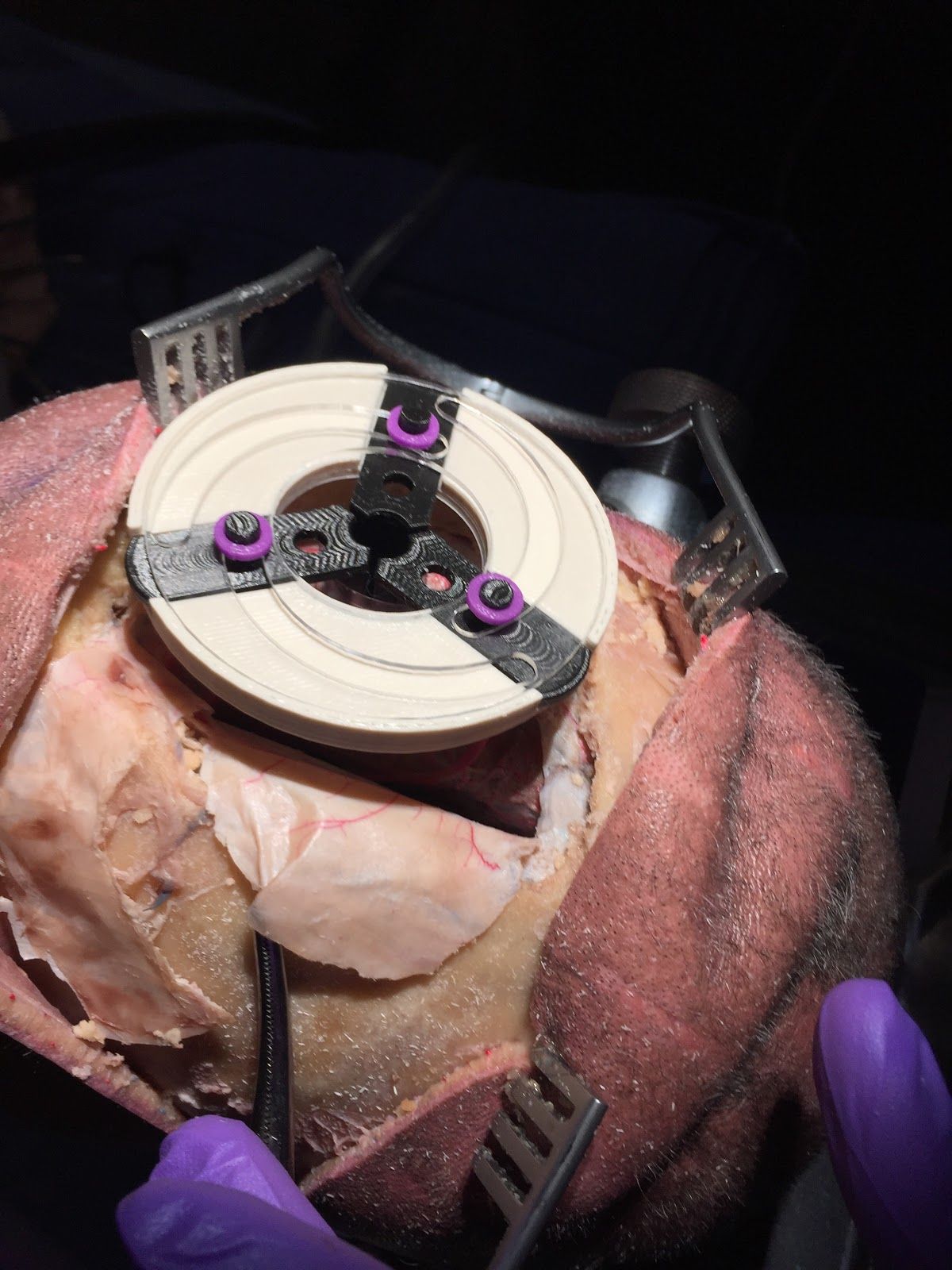
First Place
CortiTech: Designing a Minimally Invasive Brain Retractor for Deep-Seated Lesions, Johns Hopkins University
Muna Igboko, Jody Mou, Linh Tran, Kevin Tu, Jack Ye, Sun Jay Yoo
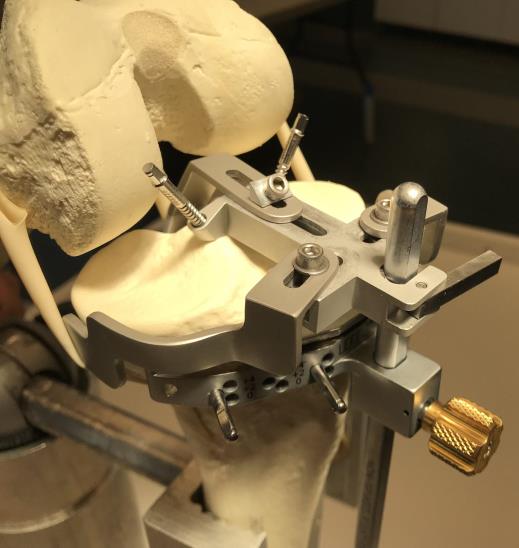
Second Place
The Voyager: Tibial Resection Tissue Protector, Clemson University
Colin Fair, Mina Gad, Alex Giron, Nick Matel, Tusharbhai Patel
This new device can assist in the resection of the tibia (one of two bones in the lower leg), helping reduce the amount of vein and ligament damage and other complications during total knee replacement procedures. It also allows for the complete resection of the tibia without any other tools or technicians, making the procedure quicker and easier for surgeons.
Click here to watch a video on this project
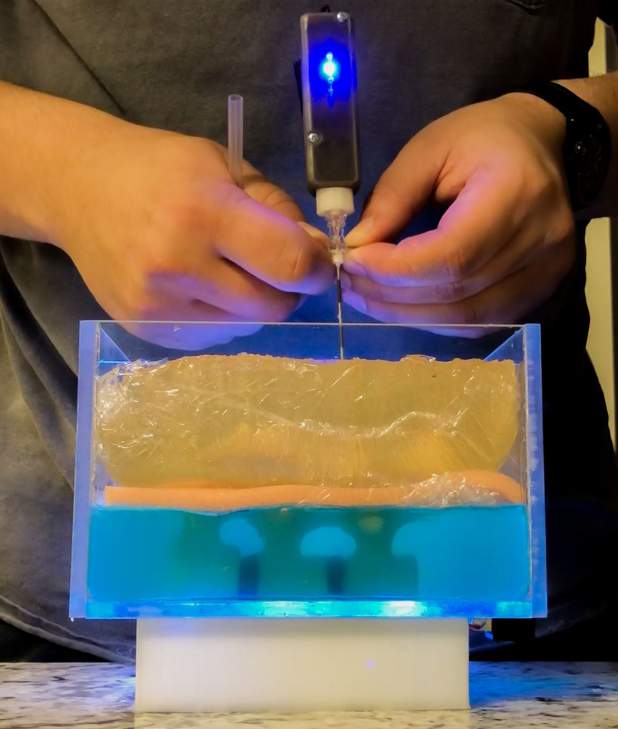
Third Place
Neuraline, Georgia Institute of Technology
Alec Bills, Dev Mandavia, Lucas Miller, Cassidy Wang
The Neuraline was developed to facilitate the placement of epidural anesthesia during labor and delivery. The current method of epidural insertion requires the technician to feel a loss of resistance in order to identify the epidural space in the spine. However, the loss of resistance can be highly variable depending on the individual patient and skill of the technician. One in eight attempts at this procedure results in complications ranging from post-dural puncture headaches to cardiac arrest, and even death. The Neuraline is designed to provide an objective measure of bioimpedance—the resistance that different tissues have to electricity—that will alert the technician to the needle’s location and when it has reached the correct epidural space.
Click here to watch a video on this project
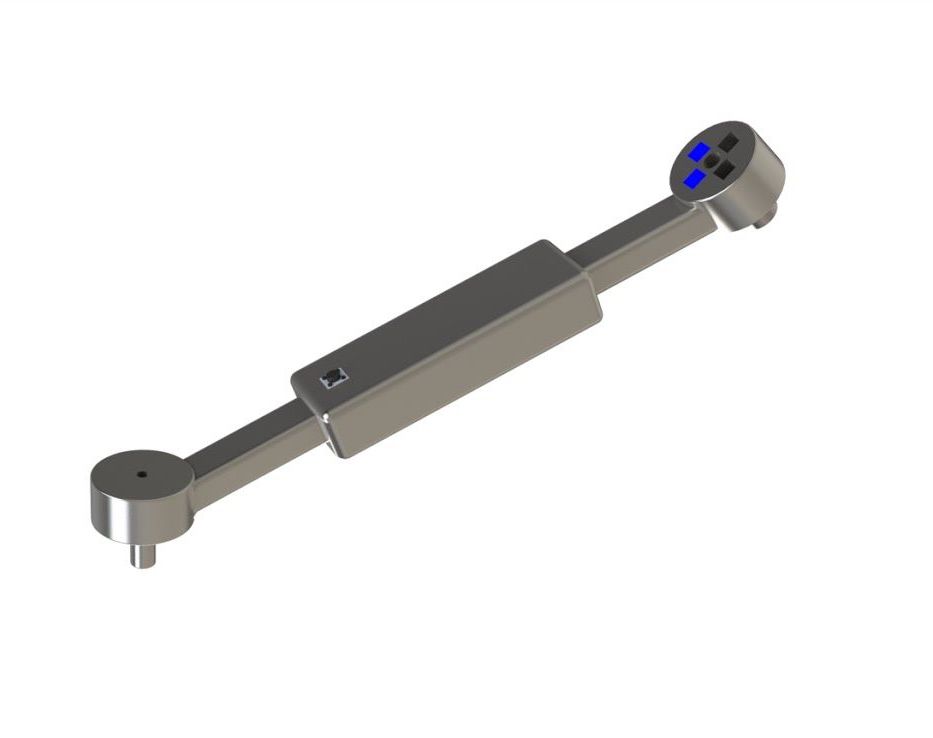
Venture Prize
Concentracizor 4 (C4): A Novel Gyroscopic Screw Guide for Long Bone Fracture Fixation, Clemson University
Ian DeMass, Kaleb Guion, Bennett Hardymon, Andrew Moore, Casey Young
The device was designed to help guide surgeons when they place orthopedic screws to set and repair broken bones. If a screw is misaligned with the hole that was initially drilled, it can lead to unnecessary pain as well as additional surgeries. The Concentracizor 4 is a simple device that uses gyroscopes to record the drilling alignment and guides the surgeon back to the proper angle for screw placement using LED lights. The device is handheld, light, and can accommodate any size surgical drill.
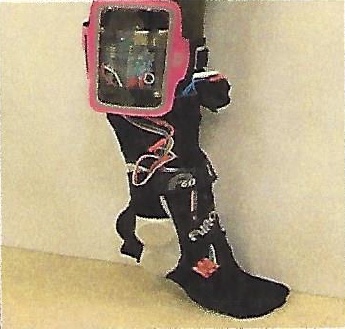
Design Excellence Prize
The Talaria Ankle Brace, University of California, Riverside
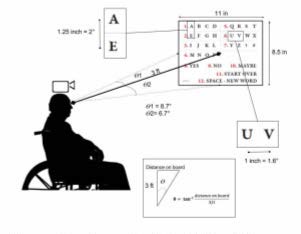
Honorable Mentions
Assistive Communication Technology for Amyotrophic Lateral Sclerosis (ALS), Drexel University
Avi Bash, Jacob Fischer, Kelly McGuigan, Jane Roberts
ALS patients eventually lose the ability to vocalize their needs which is essential for this population’s survival. Inexpensive laser-pointer based communication technologies suffer from poor battery life and reliance on a caregiver to read patient requests, whereas more expensive eye-gaze technologies do not work in all lighting conditions. The goal of this project is to develop a system that improves battery life, produces auditory output, and works in common lighting conditions.
Click here to watch a video on this project
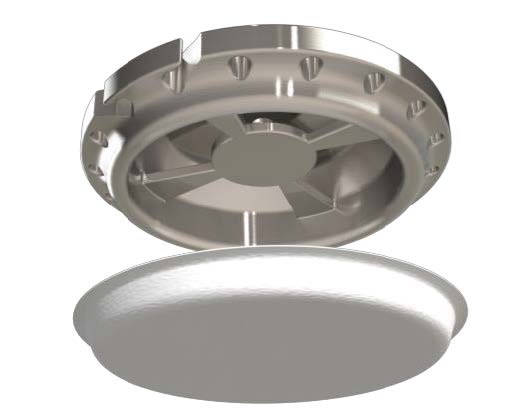
Implantable Port for the Localization and Sustainment of Encapsulated Cells for Cellular Therapy, Clemson University
Alex Ormerod, Bradley Scammon, Lucas Tatem
Cellular therapy has emerged as an alternative to immunosuppressive medications and has produced spectacular results in both animal and clinical trials. Despite their success, cellular therapies remain confined to the laboratory because of two, outstanding problems: immune rejection of the implanted cells, and a hypoxic implantation environment. This device attempts to resolves these issues. It combines the convenience and standardization of a subcutaneous implantable port with the nourishing environment established by implanted cellulose to create a single device that allows for the localized delivery and sustainment of encapsulated cells.
Click here to watch a video on this project
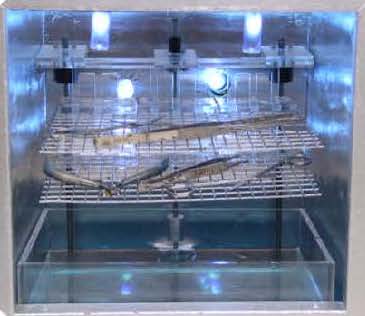
LumiChem, Columbia University
Stephanie Michaels, Hana Navarro, Alessandra Schaszberger
Access to autoclaves, which are the gold-standard in medical sterilization equipment, is limited in low resource settings either because they are too costly or not compatible with existing infrastructure. In some places, patients undergo surgery without sterilized tools, resulting in millions of people contracting infections from improperly sterilized medical equipment. The LumiChem device is specifically designed to improve surgical tool sterilization in Uganda, our target market, and other low resource settings by employing a two-stage process. Ultraviolet light in the C- wavelength band (100 -280 nm) initially eradicates microorganisms on surgical tools. The light sterilization is complemented by an engineered chemical solution that eliminates microorganisms that are resistant to the ultraviolet light.
Click here to watch a video on this project
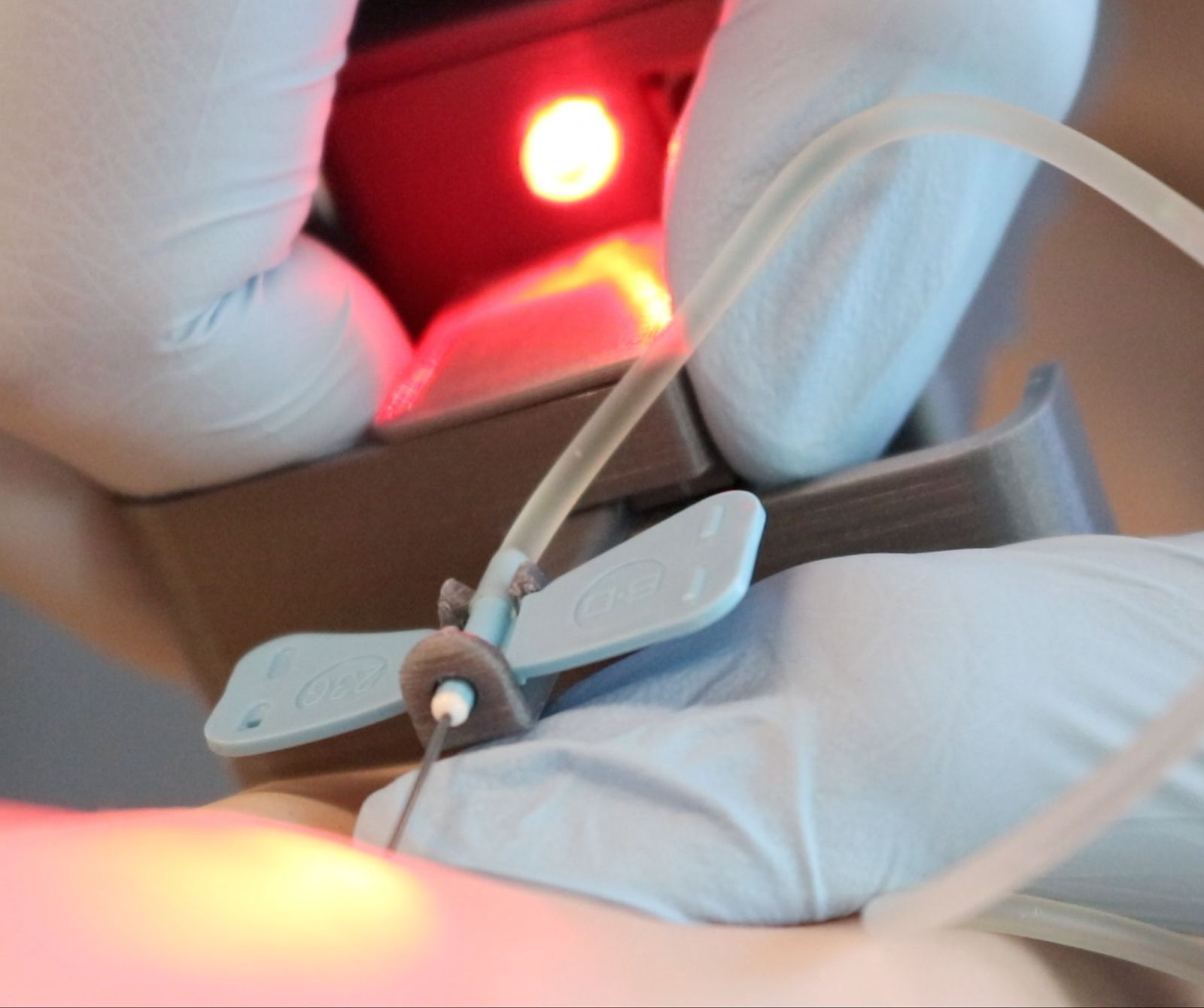
Vein Guard, University of California, Riverside
Kate An, Allen Dalisay, Ammar Hakim, Raymond Iu, Jesse Soliman
Venipuncture is one of the most common medical procedures. It is used in administering IV fluids and drawing blood. However, several complications have been known to result due to unsuccessful blood draws. A health practitioner may accidentally puncture through the vein, pricking other nearby veins, arteries, or nerves which can result in long-term complications. The Vein Guard, alerts the practitioner of successful vein penetration, relieving uncertainty. The warning mechanisms aid practitioners from puncturing further through the vein, minimizing the occurrence of complications during blood draws. In addition, this device could be used in the phlebotomy training sector, allowing new practitioners to be more confident when conducting blood draws.
Click here to watch a video on this project
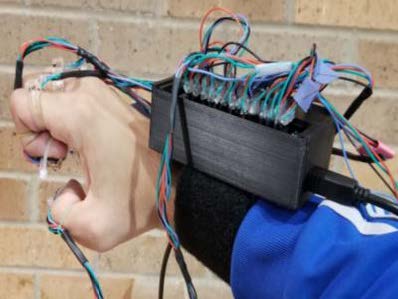
Wearable Gesture Recognition System with application to American Sign Language, University of Texas at Arlington
Fernando Campa, Luis Castillo, Muhammed Memon, Phong Tran, Freddie Ventura
American Sign Language (ASL) is widely used among the hearing impaired community in the United States. However, its users face significant challenges in assimilating with the hearing world, especially in the workplace. The objective of this project is to develop a device that acts as a real time, personal interpreter for ASL users to encourage more deaf people to join the workforce and also increase their quality of life outside of work. This prototype recognizes and converts 17 letters of the alphabet with acceptable accuracy (96-99% for easy, 50-60% for harder letters) and displays them on a computer screen with audio output.
Click here to watch a video on this project
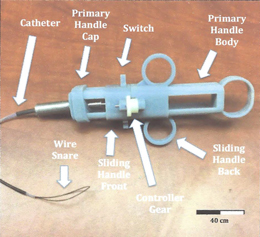
Smart Snare, Clemson University
Lauren Alford, Sheena Amin, Nicholas Baxter, Bryce Kunkle, John McGreevey, Julia Spieker
The Smart Snare includes a rotatability feature in addition to a novel axial bending component. The Smart Snare's novel features and rotatability gives unparalleled control that allows for quicker and more complete polyp removal during colonoscopies. This would make approximately half of the subsequent operations unnecessary, reducing associated costs and complications.
